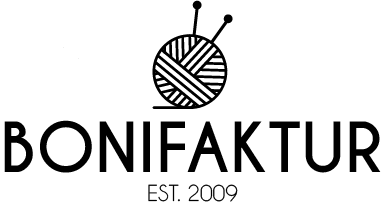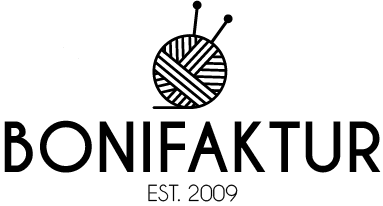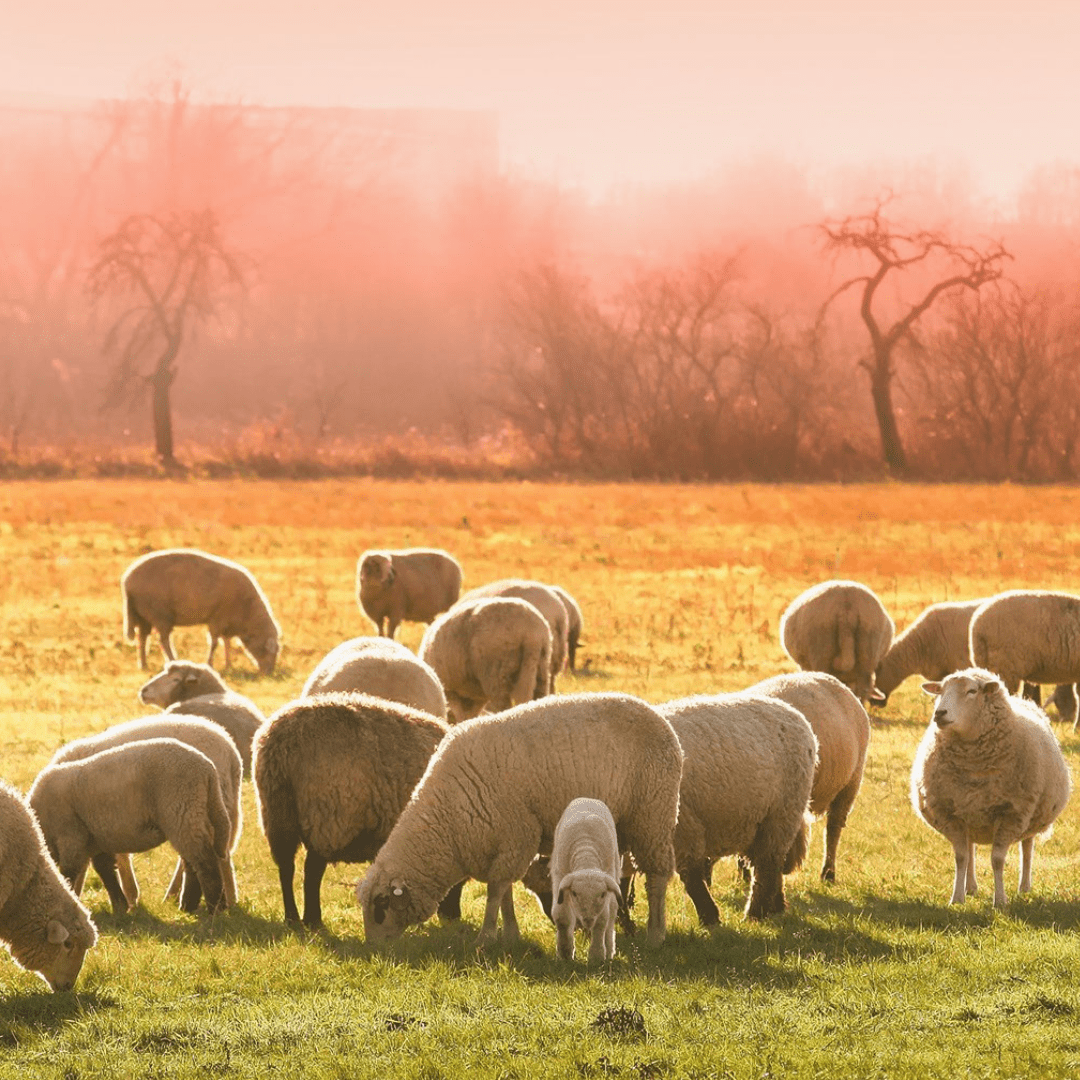fibers
There are about as many fibers as there are knit styles. Okay, maybe not that many, but there are quite a few. And because all this can sometimes be quite confusing, we would like to shed some light on this for you and show you which fibers are available and what makes them special! Here we go:
Animal fibers
(New) wool: The absolute classic - no question. So much so that yarn is commonly referred to as wool, although (new) wool is often not actually included. I'm probably not telling you anything new here, but we want to remain complete. Well, wool is spun from the fleece of sheep. It is one of the oldest textile materials and is just as popular today. It is resilient, flexible and can be colored particularly well. Above all, it has excellent insulating properties. That's why it keeps us so wonderfully warm. New wool is of course not the same as new wool. The sheep from which it comes is very important. Lambswool, for example, has the warmest and softest fiber. The merino wool, who would have guessed it, comes from the merino sheep.
Cashmere: Actually, we know this as a luxury term for sweaters or scarves. But it can also be wonderfully knitted. Cashmere is particularly characterized by its extreme softness. She is shorn once a year from the belly of the cashmere goats, which are actually only found in Tibet and China. Unfortunately, because this fiber is also quite expensive, it is usually found in combination with other fibers.
Vicuña: While we're on the subject of exceptional (and exceptionally expensive) fiber, there's no getting around vicuña. The Vicuñas live in the South American Andes in the wild. This means that in order to be able to shave (actually comb) them, you first have to track them down in these seemingly endless expanses. They also produce just enough wool to shear once every three years. But because these fibers are so incredibly soft and luxurious, you still make the effort. Unfortunately, this is also reflected in the price. Nonetheless, it is amazing to knit with yarn like this. You won't find anything softer.
Smart ass fact: Fashion made from vicuña fibers is in great demand, especially in the corresponding countries in South America. Unfortunately, you quickly pay a few hundred to thousands of euros for such a piece. That's astronomical by our standards, but if you look at the local price level, it seems almost absurd. That would probably be like buying a cloth made of gold thread here. Okay, okay, maybe not quite, but you get the point. It's just so expensive.
Alpaca: Very closely related to the vicuña. But there is a very decisive advantage, it is absolutely affordable. What is similar, however, is that alpaca wool is also obtained by combing rather than shearing. The fibers are quite long and hollow. This is why they become particularly light and warm when they are spun. Since alpacas are naturally mostly beige to brown, the fibers must first be bleached before dyeing. The finest alpaca fiber is the Suri. Unfortunately, alpaca yarn has very little "memory", which means that it can unfortunately wear out quite quickly when stretched.
Llama: Of course we must not forget the llama at this point. Its fiber has properties very similar to those of alpacas, but Llama wool is less fine.
Camel: In what exact degree of relationship the camel is to alpacas, vicuñas and llamas, whether it's a great-uncle of 15 degrees or maybe a Schwipp brother-in-law, that's what we want to know don't go into more detail now. For us it is actually enough to know that they are related. However, the camel's hair is neither shorn nor combed, it is collected as soon as the animal loses it. Since camel hair is particularly strong and warm, it is often used for coats. Most of the time, the wool stays in its natural color because it's very difficult to dye it.
Mohair: Mohair is an exceptionally light and warm yarn spun from the fleece of Angora goats traditionally bred around Ankara in Turkey. Today, however, they are bred all over the world. The kid mohair, on the other hand, is obtained from the fleece of the young goats, which, as always, makes it softer than that of the adult animals. Mohair is very similar in texture to wool, but unfortunately a little less resilient.
From now on it's finally going to be a bit exotic. Nonetheless, we also want to (and especially) introduce you to the exotic animal fibers that are out there.
Bison: Bison wool is very similar to cashmere wool at first glance. It also feels very similar. It's a good deal warmer than virgin wool and exceptionally durable.
Quivit: Well, have you ever heard of it? This is the fiber of the arctic musk ox's undercoat. This is ABSOLUTE yarn luxury. It is finer than cashmere and eight times warmer than wool. If you touch and use it, it will only get softer. As you can probably guess from the origin, this fiber is also outrageously expensive and is therefore not very suitable for everyday knitting.
Angora: You may have noticed that we've heard of Angora before. However, this has nothing to do with the Angora goat. This fiber comes from the Angora rabbit. Yes, you read that right, from the rabbit. However, the yarn obtained is extremely soft, fluffy and warm. It is quite complex both in terms of further processing and in terms of obtaining it, it also has to be obtained by combing and each animal produces very little wool. Unfortunately - once again - it is not only exceptionally great but also quite expensive *sigh*.
Possum: A soft, lightweight fiber. The animals are originally from Australia. Since the fibers are so short and fine, they have to be spun together with other fibers such as new wool, alpaca or other trendy fibers.
Smartass fact: Possums were introduced to New Zealand in the 1800s. Since they had no natural enemies there, however, they spread rapidly and posed a serious threat to the ecological balance of the island.
Silk: Silk is something very special. It is the epitome of luxury. At least they know where it comes from. Silk is not derived from animal hair, rather it is a protein fiber. However, since it is obtained from the cocoons of the silkworm, it is still an animal textile fibre. The cocoon is "unwound" so to speak, whereby the individual strands can each be up to 1500 meters long. Then two of these threads are spun together into one. As you can imagine, these threads are extremely thin, which makes their processing very complicated. The thread that has already been spun together is spun together with other threads until the correct strength is achieved. One could easily fill entire books on the subject of silk.But we want to leave it at that for now
Puhhh first take a deep breath, that was a bit something. Of course, there are some other animal fibers as well, but we don't want to go beyond the scope here as we have other topics we'd like to cover. But if you would like to know more about animal fibers, please let us know in the comments and we will delve deeper into the topic in another post. So now on to the plant fibers.
vegetable fibers
Cotton: One of the oldest known textile fibers and also the most widespread. Cotton grows wherever it's hot and the finest come from Egypt and Sea Island. Combining these two results in Pima cotton, a name you may have heard before. Cotton is an ideal textile in many ways. It absorbs moisture, dries quickly and cools. However, it also has a downside. It has less stretch than virgin wool.
Smartass fact: Mercerized cotton (named after Scotsman John Mercer, who invented the process) is treated with caustic soda and then stretched until it nice and soft and strong. The French call such yarns fil d’éscosse (Scottish thread).
Linen: Linen is made from the stalk of the flax plant. Turning it into a spinnable and even knittable fiber is relatively complex and involves a number of work steps. But once it's spun, you have a shimmering, resilient yarn. Similar to cotton, linen is ideal for hot temperatures. In woven form, linen unfortunately tends to wrinkle, but in knitted form this is hardly noticeable. Linen is often mixed with cotton, new wool or silk.
Smartass fact: Scientists have unearthed linen fibers dating back 10,000 years during excavations, as well as evidence that flax may have been in use for almost 40,000 years. With that we can say that linen or flax is one of the oldest textile fibers.
Ramie: Very similar to linen and cotton. Ramie is a nettle plant that is mainly found in China and Japan. As it is slightly stiffer than cotton or linen, it is often mixed with other fibers as a knitting yarn.
So, now we're through for the first time. But that was something. In our next post we want to look at synthetic and other organic fibers. If you have any feedback or suggestions, please let us know in the comments. We're always happy about that!
.



Knitting as a mindfulness practice: The meditative power of stitches
3 comments
Toller Wollshop, der die Wolle mit Liebe verpackt und liefert – man fühlt sich als Kundin gewertschätzt! Absolut empfehlenswert. Anke
Toller Wollshop, der die Wolle mit Liebe verpackt und liefert – man fühlt sich als Kundin gewertschätzt! Absolut empfehlenswert. Anke
Super toller Wollshop. Mit liebe gemachte Seiten. Durch Zufall im Internet gefunden. Dienstag Wolle bestellt , Donnerstag also 2 Tage später geliefert.😊 Werde ich sicher weiter empfehlen. LG Gisela